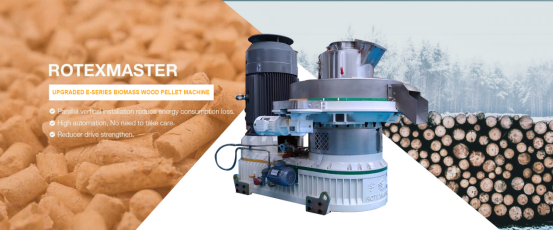
Achieving a high pellet formation rate (95%+) in biomass pellet production isn't accidental—it's engineered. For operators of biomass pellet machines, optimizing feedstock pretreatment is the decisive factor separating mediocre (85%) and premium pellet quality. Here are the five science-backed control points to bridge that gap:
1.Pellets Size Uniformity: Target 0.5mm–5mm
Inconsistent pellets size creates weak points in pellets, causing cracks and fines. Research shows:
1)Corn stalk milled to 0.5mm via planetary ball milling (340 rpm, 3.4g load) boosts enzymatic hydrolysis efficiency, enhancing binding capacity.
3)2)Banana straw fragmented to ≤5mm significantly shortens digestion time and improves density—critical for stable pellet formation.
3)Control Tip: Use a two-stage grinding (coarse + fine) with sieving (e.g., vibrating screens).
2. Moisture Content: Lock at 40%–60%
Moisture lubricates lignin but destabilizes pellets if uncontrolled. Fast pretreatment systems prove:
1)Adjusting moisture to 40%–60% w/v during extrusion (20 sec, 300°C) maximizes lignin plasticity while minimizing hydrolysis inhibitors.
2)NaOH pretreatment of banana straw at 90% moisture elevated methane yield by 81.1%—indicating optimized fiber flexibility.
3)Control Tip: Inject steam or water via sealed ports in biomass pellet machines for real-time adjustment.
3. Thermal/Chemical Pretreatment: Short-Duration & Precision
Lengthy treatments degrade sugars; fast, targeted methods unlock fibers:
1)Extrusion at 150°–300°C for <20 sec (300–500 psi) minimizes inhibitors like acetic acid (<25 kg/MT) while solubilizing hemicellulose.
2)PHP (phosphoric acid + H₂O₂) pretreatment generates peracetic acid to break down lignin and pollutants—slashing processing time and boosting fiber accessibility.
3)Control Tip: Pair dilute acid (2% H₂SO₄) with instant pressure release for rapid lignin depolymerization.
4. Biological Pre-Treatment: Enzymes Over Fungi
While fungi work, enzymes act faster and more predictably:
1)Laccase (30 IU/g, pH 5, 45°C, 4hr) outperforms white-rot fungi in lignin removal selectivity, creating porous fiber structures ideal for compression.
2)Xylanase (20 IU/g) removes 25% hemicellulose, shortening fiber length and improving binding.
3)Control Tip: Enzymes thrive at 40°–50°C—pre-heat feedstock to accelerate reactions.
5. Mechanical Preconditioning: Extrusion Beats Milling
![]()
Biomass pellet machines homogenize while activating binders:
1)Twin-screw extrusion (100–2000 rpm) forms solid “plugs” that separate reaction zones, enabling <15-sec treatment and uniform fiber ejection.
2)Output increased to 200 dry MT/day with pellets sized at 15–25μm—ideal for pellet machine die filling.
3)Control Tip: Use biomass pellet machines with pressure-actuated valves to auto-discharge stabilized fiber slurry.
Real-World Impact: From Theory → 95% Pellet Rate
Implementing these controls shifts outcomes:
1)Crystallinity index ↑ from 37.2% to 46.7% (reed straw after CaO/Na₂CO₃ pretreatment) → harder, stable pellets.
2)Inhibitors like furfural ↓ to <1kg/MT → no pellet disintegration.
3)Fiber porosity ↑ (SEM-verified pores) → better machine compaction.
About Shandong Rotexmaster Machinery
A pioneer in pellet engineering, Shandong Rotexmaster integrates these pretreatment principles into its biomass pellet systems. Its biomass pellet machine enable <20-sec thermal-mechanical pretreatment, while adaptive moisture control and pellets-size optimization modules ensure 95%+ pellet formation rates. From lab-tested methods to industrial-scale machines—Rotexmaster turns biomass into gold.
